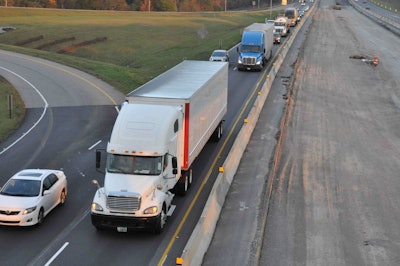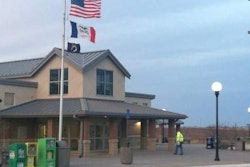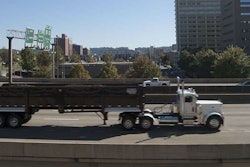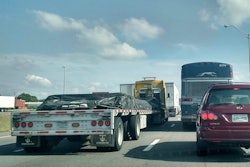 Improvements to the interstate highway system, including additional services at rest stops, will likely entail the public and private sectors working more closely together.
Improvements to the interstate highway system, including additional services at rest stops, will likely entail the public and private sectors working more closely together.One of the anomalies about President Trump is that he doesn’t clearly stand for Big Government or Small Government. Like a good Republican, he appears to fall mostly in the Small camp, as evidenced by his executive orders to put new regulations on hold and to begin his overhaul of Obamacare.
But some signs, especially campaign remarks, point the other way: calls for massive deficit spending, expanded tax benefits for maternity leave and child care, and forcing colleges to make tuition cheaper.
There’s plenty more, too, as detailed in this Wall Street Journal pre-election story, “Donald Trump loves him some big government.” Which brings us to his promise to spend $1 trillion over 10 years on infrastructure. Federal spending this heavy is hardly a GOP trademark, even if sweetened with major job creation. Senate Democrats took the initiative on this early when last week they introduced their own $1 trillion infrastructure plan.
Elaine Chao, newly appointed transportation secretary, has echoed the president in calling for increased public-private partnerships for an infrastructure boom. That would include tolling and possibly tax breaks. Such practices have had mixed receptions among liberals and conservatives, partly because of the awkward dance created for the public and private partners.
Predating Trump’s arrival is another matter that meshes public and private involvement. That’s the Federal Highway Administration’s request for comments on whether states should be allowed to expand commercial activities at rest areas. This would make way for things such as produce sales or additional vending machines.
The truck stop trade group NATSO opposes the idea because it would “undercut highway-based businesses.” While government doesn’t need to meddle in markets best served by private enterprise, there’s a bigger issue here. That’s parking.
The share of truck parking places provided by rest areas has been steadily shrinking for years. It’s essential to at least preserve remaining rest stops by letting them generate a little profit and, most importantly, making them as welcoming as possible with basic services, including food.
Another commonality in parking availability and highway spending is scarcity. NATSO members continue to add parking spaces, but the inventory never catches up with demand. Making matters worse, there can be tremendous resistance to new spaces when someone tries to make an expansion.
The parking shortage is so severe that some major truck stop chains now sell parking reservations.
Likewise, highway capacity and maintenance haven’t risen proportionately with traffic. The cents-per-gallon-based federal fuels tax, set in 1993, hasn’t kept up with inflation or increases in fuel efficiency. That’s meant Highway Trust Fund annual deficits of $15 billion or more.
Improving rest stops is a fine, simple idea. The future of interstate highway funding is far more complex. Early discussion of Trump’s infrastructure plans often noted that “he likes to build things.” Let’s hope that however he and Congress choose to build out our infrastructure, it doesn’t financially punish the industry that already pays more than its share to support roads and bridges.









